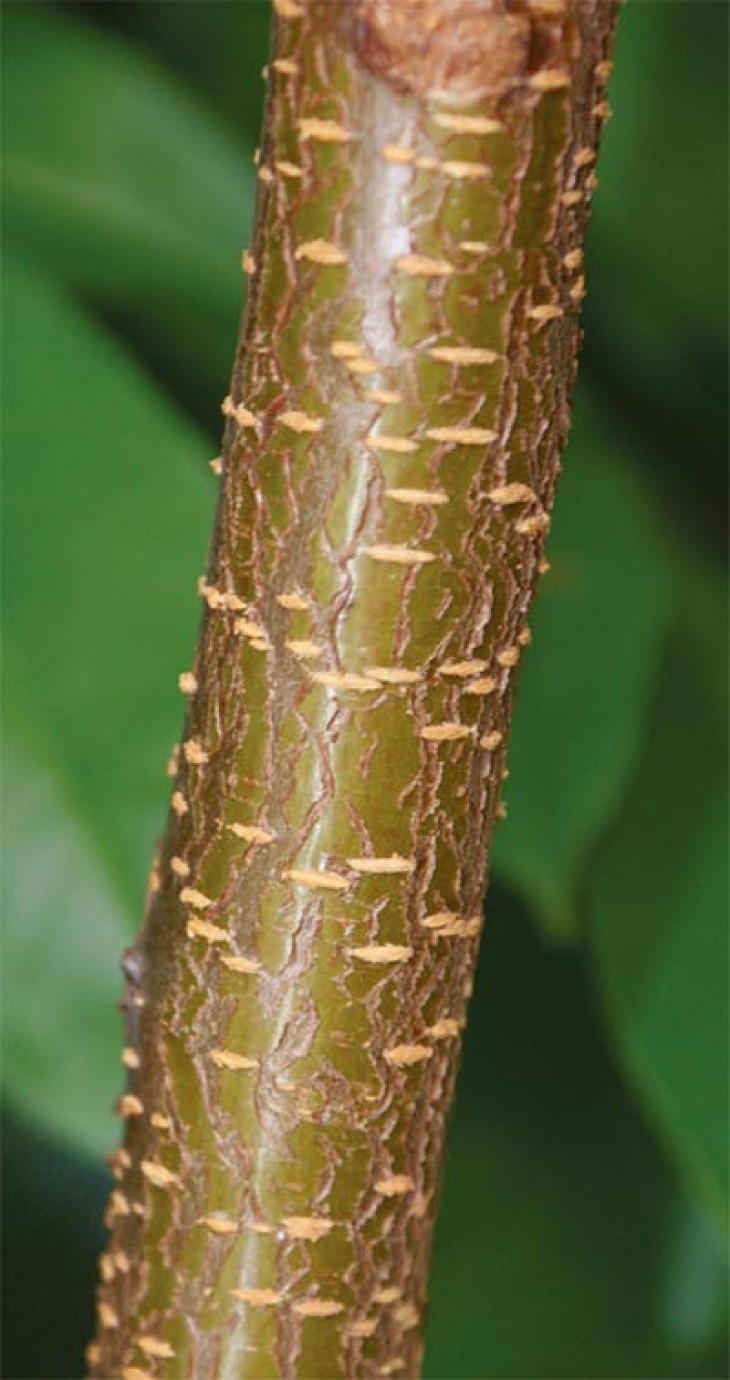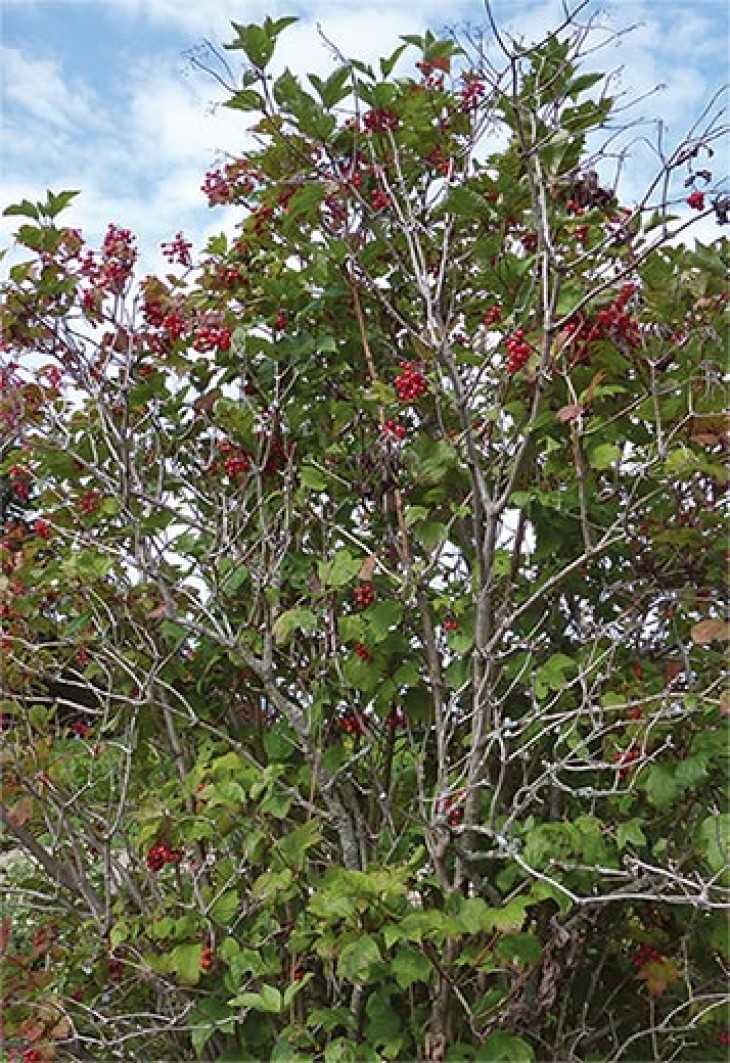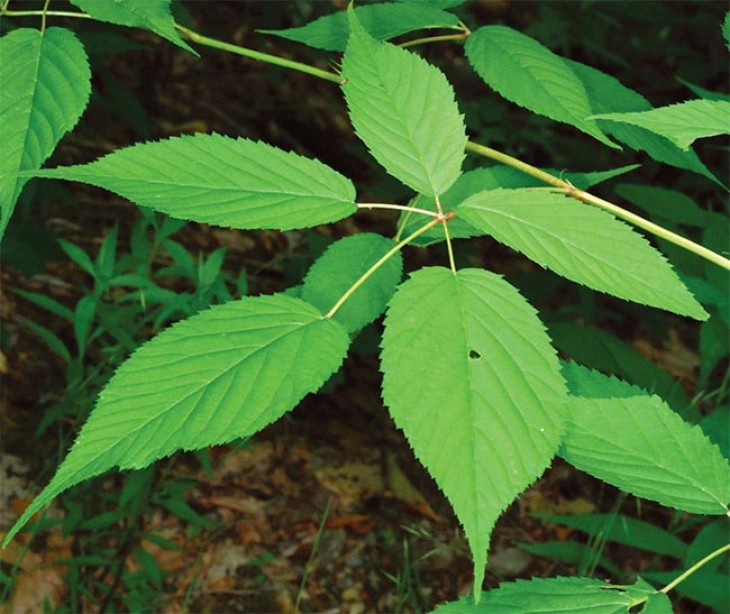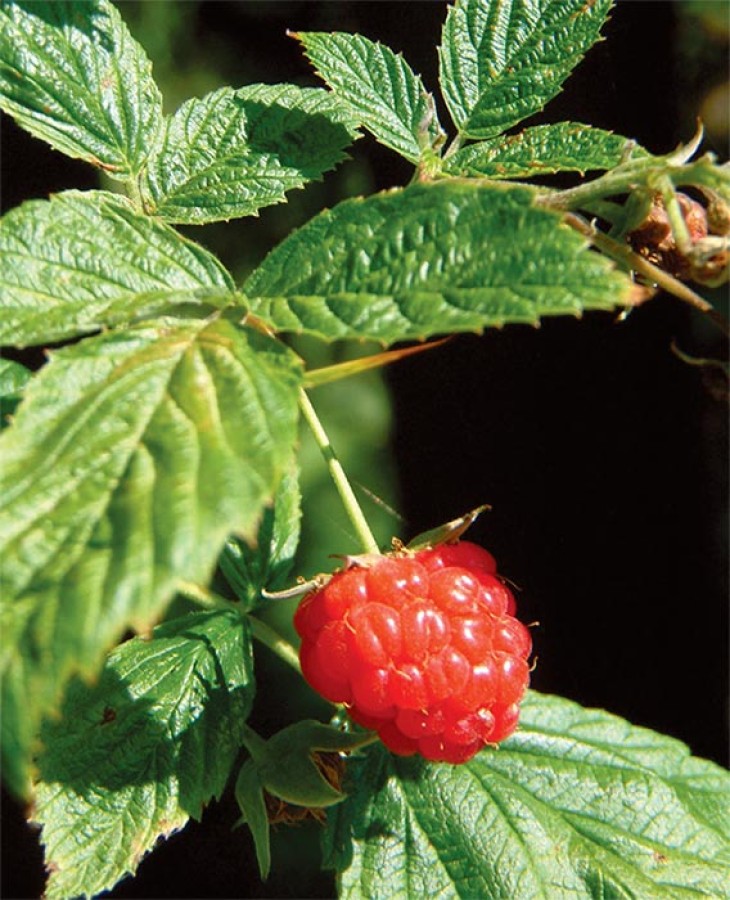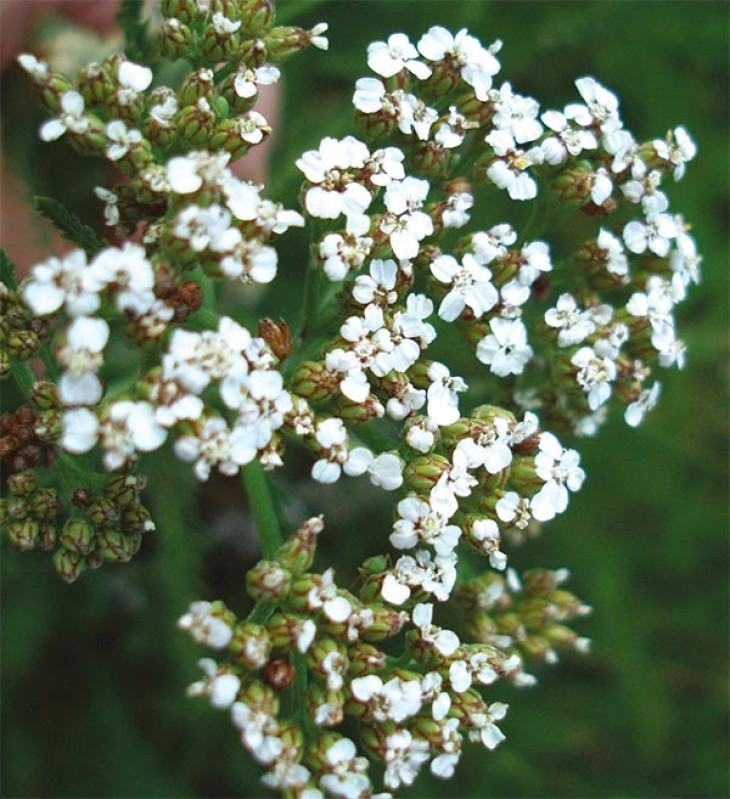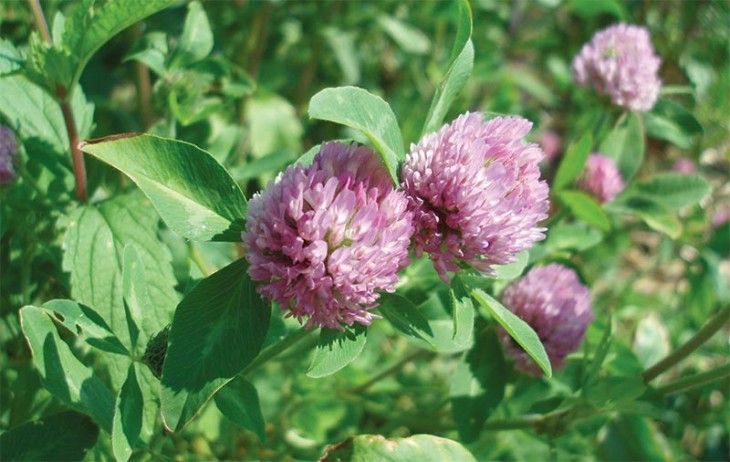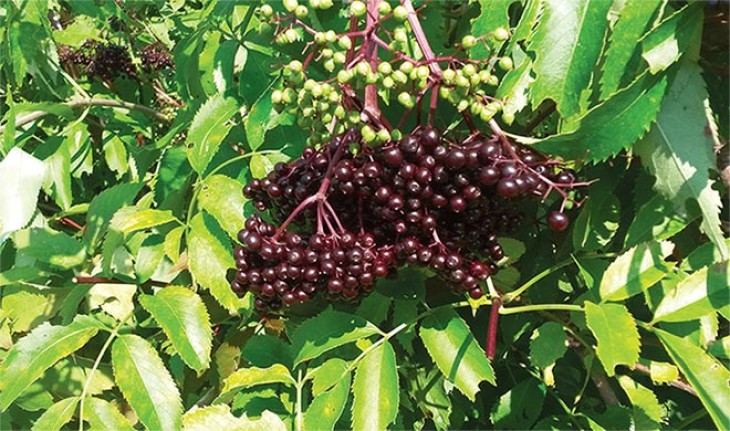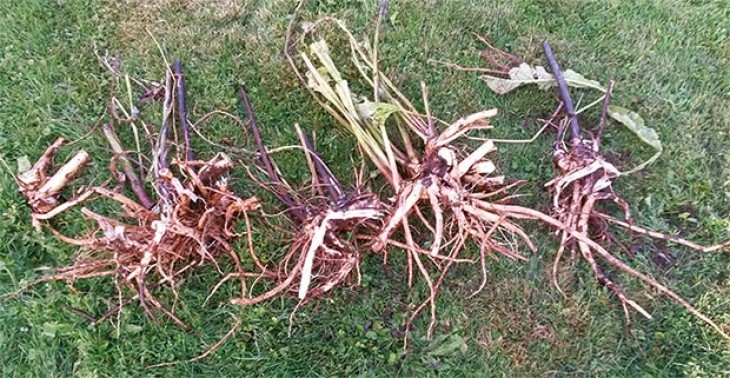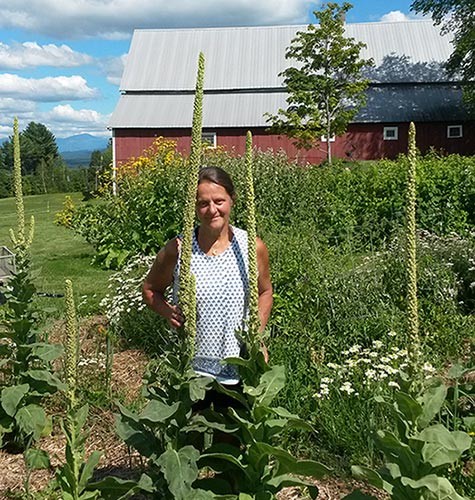
As a longtime resident of Sugar Hill, New Hampshire, Holly Hayward has an intimate knowledge of the landscape here. And she comes from a long line of foragers. She remembers gathering dandelion greens as a girl with her grandmother by the five-gallon bucketful, then blanching and freezing this first nutritious wild food of the spring. She knows which trees’ bark has medicinal properties and which common “weeds” can ease the itch of summer bug bites.
Hayward began training as an herbalist in 1984, studying at Heartwood College in California. She founded Sugar Hill Botanicals in 1990 and continued her studies at the Dominion College of Herbal Medicine in Vancouver, B.C., from 2001 to 2002, and with an advanced apprenticeship with renowned herbalist Rosemary Gladstar in 2003. She practices her avocation with a scientist’s observations mixed with an inherited sense of Yankee thrift and ingenuity. Hayward often collaborates with doctors in treating clients, and she stresses the importance of understanding the science of both how different plants work and how they interact with each other and with other treatments.
While Hayward grows many of the plants she uses in her work in a large garden across the road from her home and office, other ingredients – bark, leaves, and roots – she gathers from the fields and forests nearby, wildcrafting to supplement her cultivated plants. Some wild herbs, certainly, are easier to find and simpler to use than others. Common plantain, for instance, is prolific and requires minimal preparation. Highbush cranberry bark, on the other hand, requires forethought and careful preparation to be used as herbal medicine. Hayward stresses the importance of knowing the plants and their properties well before ingesting them in any manner. She and other herbalists sometimes offer classes and guided tours of local backyards, fields, and forests, where useful herbs, weeds, shrubs, and trees provide both beauty and tonic – if you just know where to look and when to forage. Following is a guide to commonly used herbal plants, and some of their purported medicinal properties.
Early Spring
Early Spring Dandelion
(Taraxacum officinale) greens and root
What northern dweller can resist the joy of the season’s first dandelions? That sunny yellow is good for the soul, and the dandelion’s leaves are packed with vitamins – A, B6, C, and K – and potassium, calcium, iron, and a slew of other nutrients. People have long eaten dandelion greens in the spring, and for good reason: after an extensive winter of meats and root vegetables, settlers like Hayward’s ancestors needed the nutrients in these early greens. Dandelion leaves also act as a potassium-sparing diuretic, cleansing built-up toxins from the system. From dried dandelion roots (pictured), harvested in early spring or late fall when the nutrients are concentrated, Hayward makes a tincture used in liver- and blood-purifying treatments.
Stinging Nettle
(Urtica dioica) leaves
Another early-spring plant, stinging nettle, was also an important spring tonic for early settlers. Stinging nettle prefers moist, rich soil and is often found by rivers and streams or at the edges of cultivated fields. The leaves are high in protein, calcium, magnesium, iron, and vitamins A, C, D, and K, and act as a natural diuretic. Hayward refers to stinging nettle as an “early super food.” She tinctures the leaves to use as a prostate-health booster and an antihistamine. Note: they’re called “stinging” for good reason; the nettle’s many tiny hairs along stem and leaves can be painful when touched, so wear gloves when harvesting.
Black Cherry
(Prunus serotina) bark
The “cold & flu” aisle of your local drugstore likely stocks “wild cherry” cough drops. While many of these are more sugary treat than useful remedy and may not contain any actual cherry, the idea is rooted in herbal medicine. Bark from the black cherry has anti-spasmodic and expectorant properties useful in treating coughs and loosening mucus. Hayward has a black cherry tree growing next to her back porch, but the trees also grow in many Northeastern forests. She harvests the bark from cherry branches in the early spring and tinctures it to use for lung and cough treatments.
Highbush-Cranberry
(Viburnum opulus) bark
Found along streams, in moist meadows, and on wooded hillsides, the highbush-cranberry, with its late-lasting, bright-red berries, is a late winter food source for birds. For human use, its bark has anti-spasmodic and pain-relieving qualities. Hayward calls this “cramp bark” and uses it to treat uterine cramps and other muscle cramping.
Spring to Summer
Common Blackberry
(Rubus allegheniensis) leaf and root
Eating a sun-warmed, perfectly ripe blackberry straight from the vine is one of summer’s great pleasures. There’s more to this brambly plant than delicious berries, however. Both the blackberry’s roots and its leaves (pictured) have astringent properties that make it a good treatment for irritable bowel syndrome, diarrhea, and other digestive challenges. Hayward mainly uses the leaf, as it’s easiest to harvest, and makes it into a tea.
Red Raspberry
(Rubus idaeus) leaf
Among the minerals raspberry leaves boast are calcium, iron, magnesium, and potassium. Hayward calls raspberry leaf “the number one women’s herb,” and uses it in her iron tonic and to treat symptoms of menopause.
Distinguishing a raspberry bush from a blackberry bush – or some other prickly wild shrub – is not difficult if you look closely at the leaves: blackberry leaves are palmately compound, meaning the whole leaf cluster looks vaguely like a hand (thus “palm”) with about five leaflets, while raspberry leaves are pinnately compound, and the leaflets branch in opposite pairs along the stalk.
Common Plantain
(Plantago major) leaf
It looks like a common weed, spread throughout mown yards and along the edges of backroads, but the low-growing plantain can have mighty – and immediately soothing – powers. Known as “White Man’s Footprint” because it spread so readily after it was introduced by European settlers, plantain has somewhat rounded basal leaves and spikes of tiny, greenish-white flowers. With antiseptic, antibacterial, and astringent properties, plantain leaves make a convenient on-the-spot remedy for bug bites, bee stings, and small cuts. Simply chew a clean leaf or roll it between your hands to extract the juices, then rub it on a rash, bite, sting, or scrape to stanch bleeding and ease pain, itching, and swelling.
Summer
Yarrow
(Achillea millefolium) flowers
With its flat-topped clusters of tiny, white flowers and delicate-looking, fernlike leaves, yarrow is a summer wildflower both beautiful and useful. Early settlers used yarrow to reduce fevers, a practice modern herbalists continue. Yarrow is also an antiseptic and stimulates the immune system. Hayward uses the flowering tops in tinctures and in a tea combined with elderberry flowers and peppermint to treat fevers.
Red Clover
(Trifolium pratense) flowers
Red clover is both edible and medicinal, and it grows abundantly in fields and meadows, along roadsides, and in yards. Hayward says the flowers are best picked early in the morning, when the dew is still on them. She picks the new flowers with the top leaf whorl, dries them in a dehydrator, and stores them in glass jars until she needs them. She uses red clover in formulas for relieving menopausal symptoms and for treating spasmodic coughs.
Late Summer to Fall
Orange Jewelweed
(Impatiens capensis) leaves
Known also as spotted touch-me-not, jewelweed grows abundantly in moist, wooded areas. Serendipitously, it sometimes grows near poison ivy, whose itch it is effective in treating. Hayward suggests rolling the leaves of jewel-weed between your palms and spreading the resulting paste onto poison-ivy rash.
Black Elderberry
(Sambucus nigra) flowers and berries
Black elderberry is one of the species Hayward warns novice herbalists to beware of, as it can easily be mistaken for red elderberry (Sambucus racemosa), whose berries are not safe to eat. Her note to wildcrafters: “If it flowers in May, stay away! If there are berries in June, it’s way too soon!” If, on the other hand, you find an elderberry flowering in July and bearing fruit in August or September, that’s likely a black elderberry. Hayward harvests both the flower clusters and berries. She uses the flowers, made into a tea, to treat upper respiratory illnesses and allergies. The berries she freezes for tinctures to use in tonics for treating viruses, including influenza. Another note to would-be black elderberry harvesters: keep an eye on the berries and pick them as soon as they’re ripe; if you wait a moment too long, the birds will likely beat you to it.
Common Burdock
(Arctium minus) root
It’s a rare field wanderer who hasn’t returned from some late-season outing with a pant leg covered in burs, often from a common burdock. The pinky-purple flowers of this tallish plant morph into prickly seedpods come fall. Late fall (or early spring) is the best time to harvest burdock root, which Hayward says is “very cleansing for the liver and urinary tract.” Other uses for burdock include treating gout (as it cleanses toxins from the system) and eczema and other skin conditions (it’s antibacterial).




